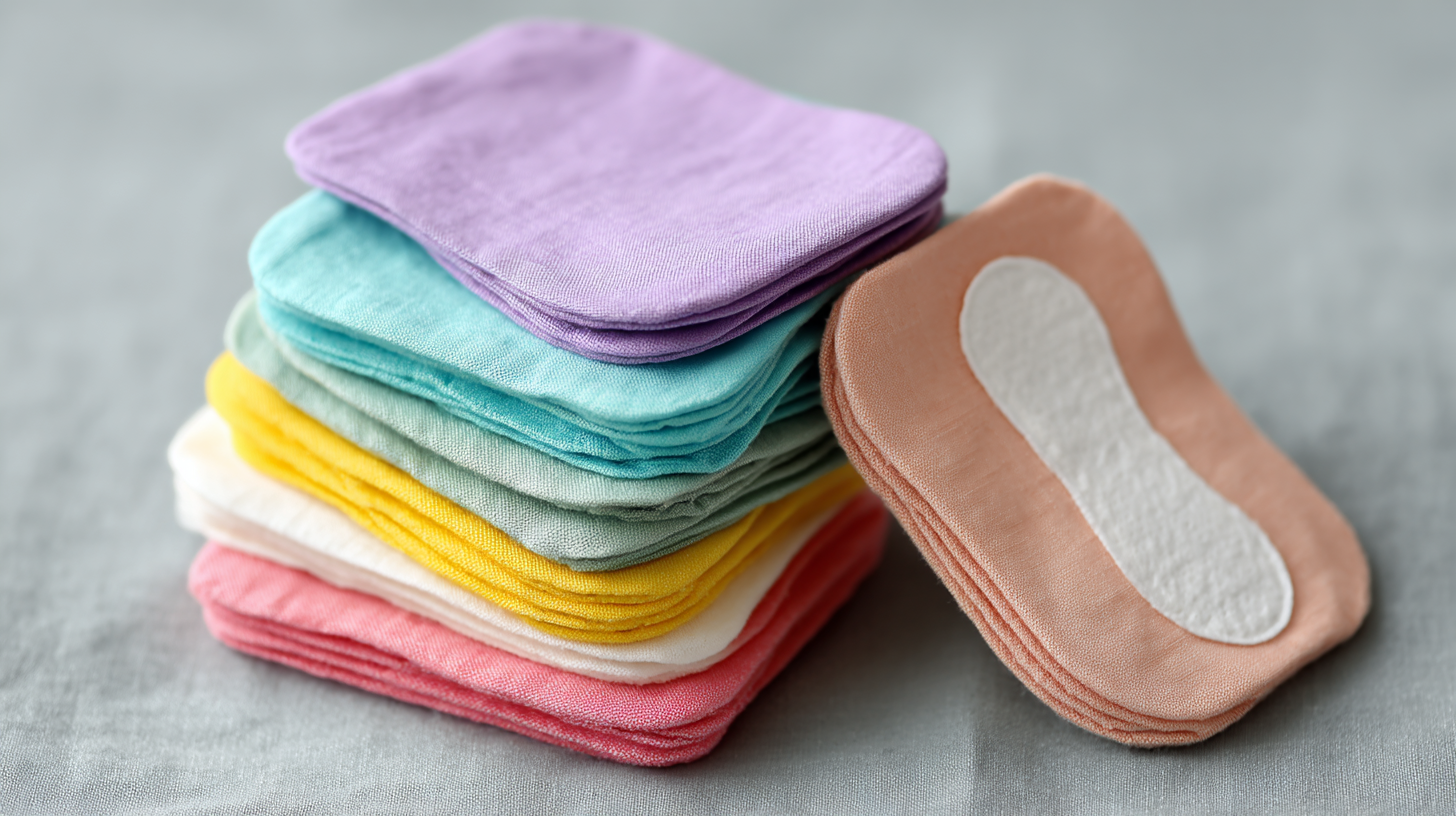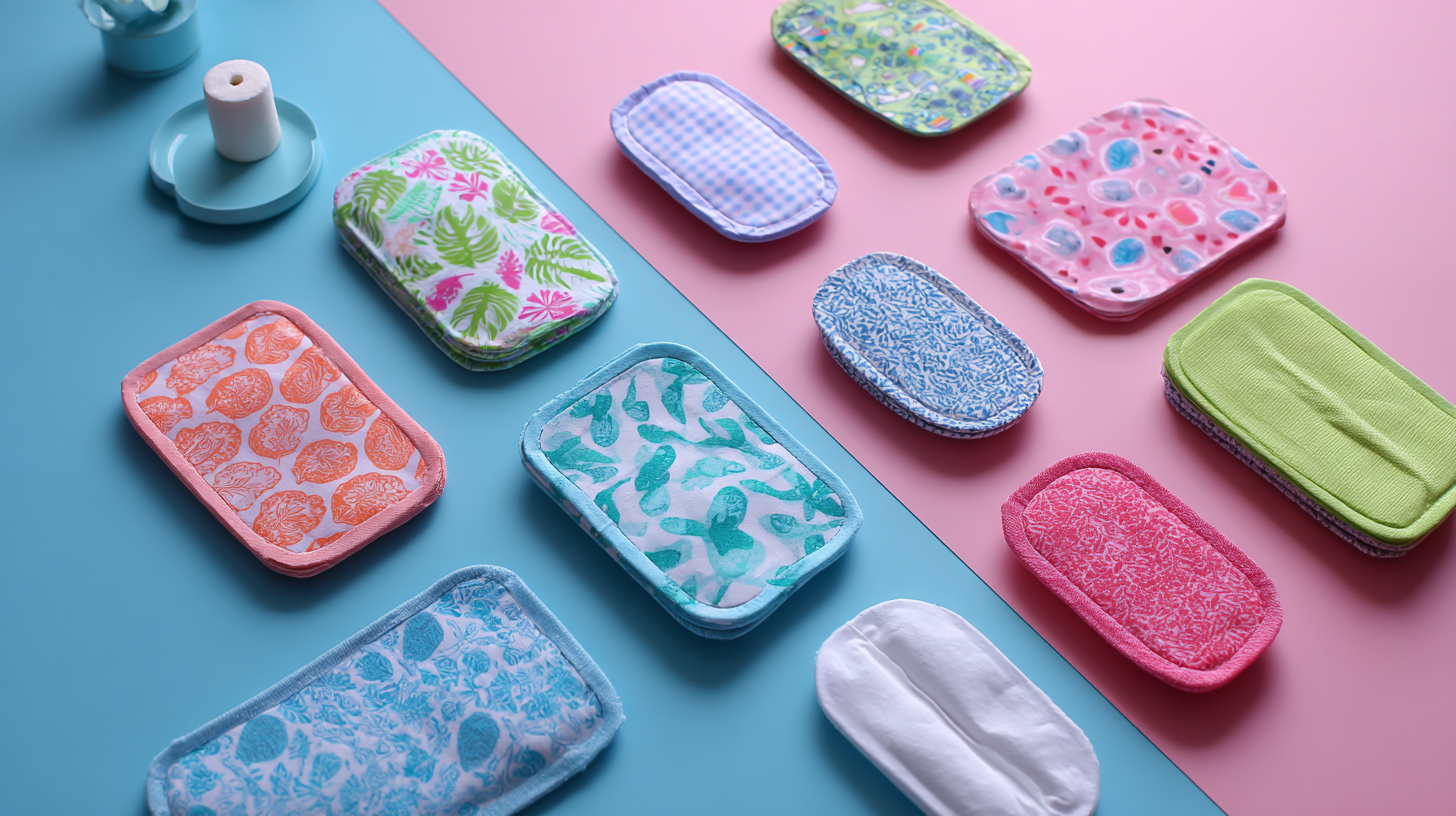
Innovative Solutions for Eco-Friendly Menstrual Care: Best Washing Reusable Sanitary Pads Fiber
In recent years, the demand for sustainable menstrual care products has surged, driven by increasing awareness of environmental issues and the harmful effects of conventional sanitary items. According to a report by MarketsandMarkets, the global feminine hygiene market is projected to reach $42.74 billion by 2027, with a significant shift towards eco-friendly options like washing reusable sanitary pads fiber. These innovative products not only reduce waste—an estimated 20 billion sanitary pads are disposed of annually—but also offer a cost-effective solution for menstruators worldwide.

With the rise of "Made in China" products that combine quality with affordability, consumers are now more inclined to adopt sustainable practices without compromising on performance. This blog will explore the benefits, materials, and market trends surrounding washing reusable sanitary pads fiber as a pivotal component in the quest for eco-friendly menstrual care solutions.
Understanding the Benefits of Reusable Sanitary Pads for Eco-Friendly Menstrual Care
The shift towards eco-friendly menstrual care has sparked an increasing interest in reusable sanitary pads, which offer numerous benefits for both users and the environment. According to a report from the European Journal of Public Health, a woman can use up to 11,000 disposable menstrual products in her lifetime, contributing significantly to waste. In contrast, reusable pads can last for years, drastically reducing landfill contributions. The fabric in these pads is often crafted from organic materials, ensuring that they are not only gentle on the skin but also biodegradable at the end of their lifecycle.
When considering reusable sanitary pads, it’s essential to understand their hygiene and care. Although some may worry about sanitation, a study from the World Health Organization states that when properly washed and maintained, reusable pads are just as safe as disposables. Women are encouraged to soak their pads in cold water and wash them with mild detergent to maintain cleanliness.
**Tip:** Choose pads with absorbent layers made from natural fibers, such as cotton or bamboo, to enhance comfort and breathability. Additionally, consider investing in a few different sizes for varying flow days, ensuring that you have the right level of protection when you need it most. Embracing reusable pads not only benefits personal health but also contributes positively to the planet.
Innovative Solutions for Eco-Friendly Menstrual Care
This bar chart illustrates the average environmental impact (in kg CO2e) of various menstrual care solutions. Reusable sanitary pads are shown to be the most eco-friendly option, significantly reducing carbon emissions compared to disposable pads, tampons, and menstrual cups.
Choosing the Right Materials: What Makes Washable Pads Eco-Friendly?
When it comes to eco-friendly menstrual care, the choice of materials for washable pads is crucial. Studies show that disposable menstrual products contribute about 200,000 tons of waste to landfills annually, taking hundreds of years to decompose. In contrast, reusable sanitary pads, typically made from natural fibers like organic cotton or bamboo, provide a sustainable alternative. These materials not only reduce landfill waste but also minimize exposure to harmful chemicals often found in conventional pads.
Choosing pads made from certified organic materials ensures that no harmful pesticides or synthetic fertilizers were used in production, making them safer for your body and the environment. Additionally, look for pads that feature a breathable layer to enhance comfort. According to a report by the Reusable Sanitary Products Association, eco-friendly pads can last up to 5 years with proper care, significantly decreasing overall menstrual product consumption.
Tips for Choosing Eco-Friendly Pads:
- Always check for OEKO-TEX certification to ensure products are free from harmful substances.
- Opt for pads with adjustable sizes and absorbency levels to suit your flow, reducing waste from unwanted products.
- Consider brands that have a transparent supply chain, ensuring ethical and sustainable sourcing of materials.

Step-by-Step Guide: How to Properly Wash and Care for Reusable Sanitary Pads
When it comes to using reusable sanitary pads, proper washing and care are essential to ensure their longevity and hygiene. Start by rinsing the used pad with cold water immediately after removal to prevent stains and odors from setting in.
Gently rub the fabric to remove excess blood, doing so with your hands or under a gentle stream of cold water. This initial rinse helps keep the pad in top condition and makes washing more effective.
Next, it's time to wash your reusable pads. You may choose to hand wash or machine wash them; both methods can be effective if done correctly. For machine washing, place the pads in a mesh laundry bag to protect them during the wash cycle. Use a mild detergent, avoiding fabric softeners and bleach that can break down the materials over time.
Wash on a gentle cycle with cold water, and air dry them in a shaded area to maintain the integrity of the fibers. By following these steps, you ensure that your eco-friendly menstrual care products stay fresh, clean, and ready for use, contributing to both your comfort and sustainability efforts.
Top Innovative Brands Offering Sustainable Menstrual Products
In recent years, the market for sustainable menstrual products has seen significant growth, reflecting a wider societal shift towards eco-conscious living. According to a report by Grand View Research, the global reusable sanitary pad market is projected to reach $2.24 billion by 2025, growing at a CAGR of 8.5%. This surge is driven by increased awareness of the environmental impact of single-use products. Brands like Thinx, PANDIA, and Wuka are at the forefront, offering innovative solutions that combine functionality with eco-friendliness. Their products are often made from organic cotton, bamboo, and other biodegradable materials, ensuring a lower carbon footprint.

These companies are not only prioritizing sustainability but also focusing on user comfort and health. Many reusable pads are designed to be ultra-absorbent and leak-proof, making them a reliable alternative to traditional menstrual products. Research from the Water Research Commission indicates that switching to reusable menstrual products can save up to 240 kg of waste per person annually. Moreover, innovations such as antimicrobial fabrics and moisture-wicking technology enhance the overall experience, promoting better menstrual hygiene while being gentle on the planet. As consumers become more informed about the benefits of eco-friendly menstrual care, these brands are paving the way for a greener future.
Tips for Transitioning to Reusable Pads: Overcoming Common Challenges
Transitioning to reusable menstrual pads can be a rewarding experience, but it does come with its own set of challenges. One of the most common hurdles is adjusting to a new routine. To make the switch smoother, start by investing in a few high-quality reusable pads made from soft, breathable fibers. Choose a variety of sizes to see which ones fit your flow best. Establish a washing routine that works for your lifestyle, whether that means rinsing them immediately after use or collecting them to wash on a designated day.
Another challenge many face is stigma and comfort. To overcome feelings of embarrassment, educate yourself and those around you about the benefits of eco-friendly menstrual care. Open discussions can demystify reusable pads and help normalize their use. Additionally, don't hesitate to reach out to online communities where you can find support and resources from those who've successfully made the transition. With a little patience and the right mindset, embracing reusable sanitary pads can lead to not only a more sustainable choice but also a more comfortable menstrual experience.
Innovative Solutions for Eco-Friendly Menstrual Care: Best Washing Reusable Sanitary Pads Fiber - Tips for Transitioning to Reusable Pads: Overcoming Common Challenges
| Feature | Details |
|---|---|
| Material | Bamboo fiber, organic cotton, and hemp |
| Environmental Impact | Reduce landfill waste and lower carbon footprint |
| Washing Instructions | Rinse in cold water, machine wash with mild detergent |
| Comfort | Soft materials provide comfort and breathability |
| Cost Effectiveness | Long-term savings compared to disposable products |
| Common Challenges | Initial cost, washing routines, stigma |
| Tips for Transitioning | Start with a few pads, choose a convenient storage solution |
| Community Support | Join online groups for sharing experiences and tips |



